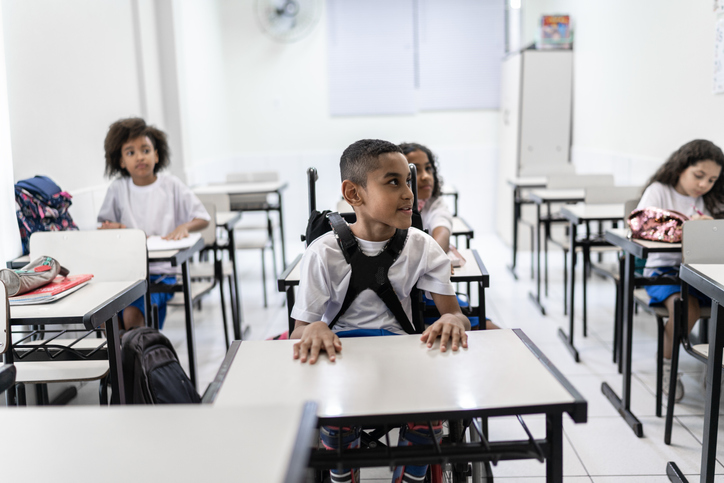
The following blog was contributed by Stephanie Cawthon, professor of psychology at the University of Texas at Austin and founding director of the National Deaf Center.
Last year brought not only the COVID-19 pandemic, but also an intensification of the public consciousness and the need to recognize, unpack, and take action to remedy the deep racial injustices in our society, particularly those experienced by people of color. Data shows our disabled students of color face systemic barriers at far higher rates than their white disabled peers. That proves to me that advocating for disability rights must include addressing the racial divide in our work to support students with disabilities.
Here are the questions I’m asking you to consider, whether you’re a district administrator, school leader, or teacher: When you think about diversity in your school or district and the initiatives to support its increase, do they consider disability? Do you acknowledge racial disparities within the disabled community?
The case for including disability in conversations about race—and vice versa
If we want to truly improve equity in education, we must expand our thinking about what diversity is to include disability—and we must expand our thinking about racism in our work around disabilities—particularly when talking about inclusion, equity, and access to opportunity. Why? Because intersectionality is an important part of equity work. Intersectionality refers to the reality that we are not just one thing; that is, that several things, including race and ability, make up our entire identity.
Expanding our thinking is also important because, as Cindy Li says, “We are all just temporarily abled.” Disability, at one point in time or another, will affect all of us.
How to include disability in equity work
Here are five things that can help you better understand disability and its place in equity work.
- Begin by defining “disability.” What does “having a disability” or “being disabled” mean, anyway? Once you know what you’re talking about, it can be easier to decide what, exactly, to do about it.
- Acknowledge that disability is complex. Disability rests on a continuum. More specifically, disability is variable, contextual, embedded in culture, and not neutral.
- Address ableism and language. Ableism refers to attitudes and behaviors that devalue people with disabilities. Ableist phrases, however unintentional they might be, can be found throughout the English language. They often use disability status as a way of putting someone or something down.
- Keep intersectionality front and center. The understanding that one size doesn’t fit all is foundational to work in special education, but we, as a field, are rarely explicit about how this concept applies to intersectional experiences related to race and gender.
- Be wary of “helper” mentality. Ableism can often masquerade as “helping” (quotes very intentional) instead of truly advocating or practicing allyship.
Read more on the NWEA blog, Teach. Learn. Grow., and on Stephanie Cawthon’s website. Interested in supporting students with disabilities in your school or district? Apply for a $10,000 NWEA Educators for Equity grant by June 11, 2021.
About the Author

Stephanie Cawthon is a professor of psychology at the University of Texas at Austin and founding director of the National Deaf Center. She is passionate about using research to help the deaf community succeed in school and beyond. She holds a BA and MA in psychology from Stanford University and a PhD in educational psychology from the University of Wisconsin–Madison.
